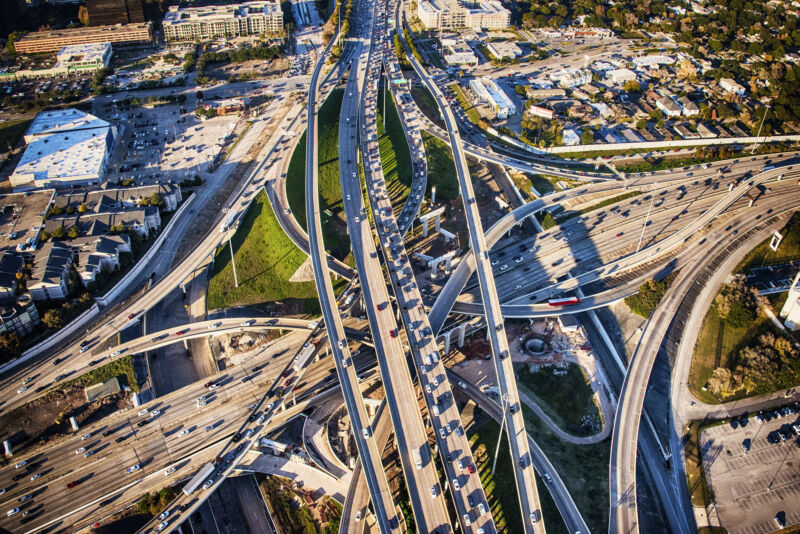
Enlarge / The intersection of Interstates 10 and 610 in Houston, Texas, during evening rush hour. (credit: Getty Images)
Statistics help tell stories, and one often touted by technologists and engineers and police officers and even the federal government told a tale. The statistic: 94 percent of US traffic crashes are the result of human error. The number felt right. It also appealed to a very American idea: that individuals are in charge of their own destinies. Rather than place the burden of road safety on systems—the way roads are built, the way cars are designed, the way streets are governed—it placed it on the driver, or the walker, or the cyclist.
The statistic was based on a misunderstanding of a 2015 report from the US Department of Transportation’s National Highway Traffic Safety Administration, which is in charge of US road safety. The report studied crashes between 2005 and 2007 and determined that the driver was the “critical reason” behind the vast majority of crashes. But a driver’s actions were typically the last in a long chain of events. The driver’s fiddly movement of the wheel, in other words, was the final thing to go wrong—a process that started with, perhaps, the surveying of the highway, or the road design laid out on the desk of an engineer, or the policy crafted by lobbyists decades ago that made it impossible for anyone to get across town without a car.

Earlier this month, after pleas from researchers, advocates, and another Biden administration official, the US DOT nixed that 94 percent statistic from its website. And on Thursday, Transportation Secretary Pete Buttigieg began to tell a very different story about US road deaths. “Human fallibility should not lead to human fatalities,” he said during a press conference in Washington, DC. His goal, he said, is zero road deaths.





